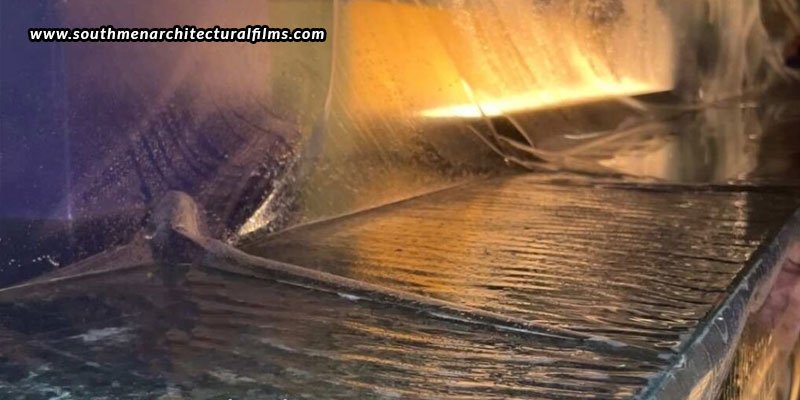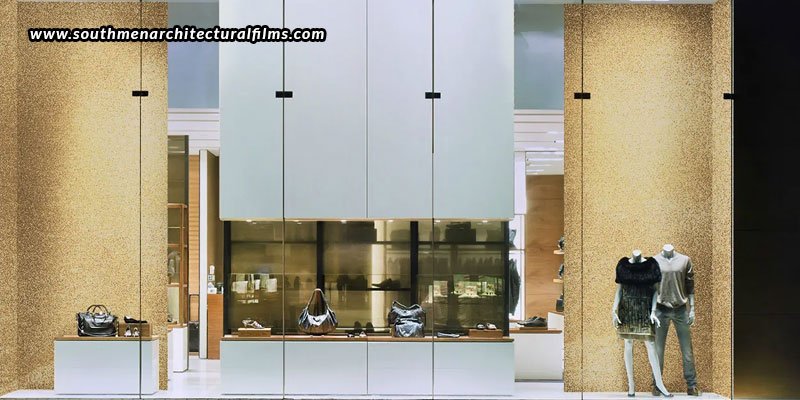Marble is a classic material renowned for its beauty and elegance. Whether featured in the entryway, staircase, living room, or bathroom, marble elevates any environment with its natural patterns and attractive surface. However, this allure comes with its own set of challenges. Being porous and soft, marble is susceptible to stains, etching, and scratches, which is why protective films have emerged as a popular choice to safeguard the expensive stone. Nevertheless, while these films provide an intelligent, non-invasive method to protect marble, they are not infallible – particularly when installed imperfectly. Let’s examine some hypothetical cautionary tales that illustrate the frequent mistakes made in the use of marble protection films. Whether you are a homeowner, designer, or facility manager, understanding these scenarios can assist you in steering clear of expensive and annoying errors.
Bubbles and trapped moisture
- What could happen:
A film is placed over a marble floor without adequately cleaning the surface. Dust particles and slight moisture are overlooked. As the film settles, tiny bubbles appear and water gets trapped underneath.
- The consequence:
These air pockets not only appear unsightly, but also retain moisture, which can lead to mould or mildew growth between the film and the marble. Over time, the surface may become discoloured, and the marble may lose its shine.
- The lesson learnt:
Proper surface preparation is crucial. Marble should be thoroughly cleaned, dried, and free of dust before applying any film. Inadequate application results in poor adhesion and unsatisfactory outcomes. Choose breathable, high-quality films that permit trapped moisture to escape, and always entrust installation to qualified professionals like Southmen. For those searching for marble protection near me in Bangalore, Southmen delivers expert application with complete precision and care.
Chemical seepage
- What could happen:
Cleaning personnel may believe the film can shield marble from all substances, including acidic cleaning agents. A small tear at the film’s edge goes unnoticed, allowing acidic cleaner to seep underneath.
- The consequence:
The exposed marble reacts to the acid, causing etching – a dull, often whitish stain that permanently changes the stone’s surface. Even worse, the damage remains hidden until the film is removed, resulting in unexpected repair costs.
- The lesson learnt:
Protection films are not designed to be chemical barriers. They offer a layer of protection, not complete invulnerability. Steer clear of acidic cleaners entirely, and ensure that everyone involved understands what can and cannot be used around protected marble.
Yellowing or discolouration
- What could happen:
In a room filled with natural sunlight, a marble table is initially covered with a standard transparent film. Although the film appears perfect at first, it starts to yellow after several months.
- The consequence:
This yellowing alters the visual tone of the marble. Once the film is taken off, the area beneath looks aged or discoloured in comparison to the surrounding areas. This discrepancy impacts the overall aesthetic of the room and could potentially diminish the property’s resale value.
- The lesson learnt:
Not all films are designed to be UV-stabilized. It is essential to use UV-resistant films that are rated for prolonged exposure, especially if you reside in highly sunny areas. This minor detail significantly contributes to preserving the visual integrity of the marble.
Adhesive residue after removal
- What could happen:
A standard protective film is applied to a marble surface during renovations, meant solely for temporary protection. Months later, when it is time to remove it, the adhesive has adhered too strongly to the stone.
- The consequence:
Taking off the film leaves behind a sticky residue that is challenging to clean without resorting to harsh chemicals or abrasive tools, both of which can further damage the marble. In some instances, even the polish layer of the marble may be removed.
- The lesson learnt:
Opt for removable, low-tack adhesives specifically designed for stone surfaces. Avoid using general-purpose or construction-grade plastic film, even for brief periods. For optimal results, choose marble-specific films that guarantee clean removability.
Water intrusion
- What could happen:
In bathrooms or kitchens, where moisture is unavoidable, a marble film is applied but not adequately sealed around grout lines, fixtures, or edges. Water begins to penetrate beneath the film.
- The consequence:
The film may lift or warp, trapping water underneath and causing damage to the marble over time. This can lead to mildew, cloudy spots, or permanent stains beneath the protective layer.
- The lesson learnt:
Wet areas necessitate water-resistant film and professional installation with meticulous sealing. Do not assume that a standard film will be adequate for such places; films in wet areas must be properly edge-sealed to prevent intrusion.
Dirty, cloudy, and sticky film
- What could happen:
Once the film is installed, the homeowner may believe that maintenance is unnecessary. Regular cleaning is overlooked, and spills are allowed to linger longer than they should.
- The consequence:
Over time, the surface may develop a cloudy or sticky appearance. While the marble underneath remains intact, the film can become dirty, detracting from the overall look. Consequently, replacing the film may be required sooner than expected.
- The lesson learnt:
Protection does not mean invulnerability. Even with a protective film, it is crucial to perform regular cleaning using non-abrasive, neutral products. Consider films as an addition to care, not a substitute for it.
Avoiding these pitfalls: A smart checklist
To ensure that your investment in marble protection is worthwhile, keep the following considerations in mind –
- Always opt for high-quality, marble-specific films
- Verify that the film is UV-resistant for areas exposed to sunlight
- Choose breathable films for extended use
- Employ professional installers
- Make sure surfaces are clean and dry prior to installation
- Adhere to regular cleaning schedules
- Steer clear of acids, abrasives, or harsh detergents
In conclusion, protective films, although an excellent option, are effective only when selected and applied properly. Even minor oversights – such as using the incorrect adhesive, inadequate sealing, or neglecting maintenance – can result in significant issues. Avoid allowing a well-meaning enhancement to become an expensive restoration. Invest the time to select high-quality materials, skilled installers, and a maintenance schedule that suits your environment. With the right strategy, your marble will continue to enhance your home or business for many years – unaffected by trends, time, or mishaps.




